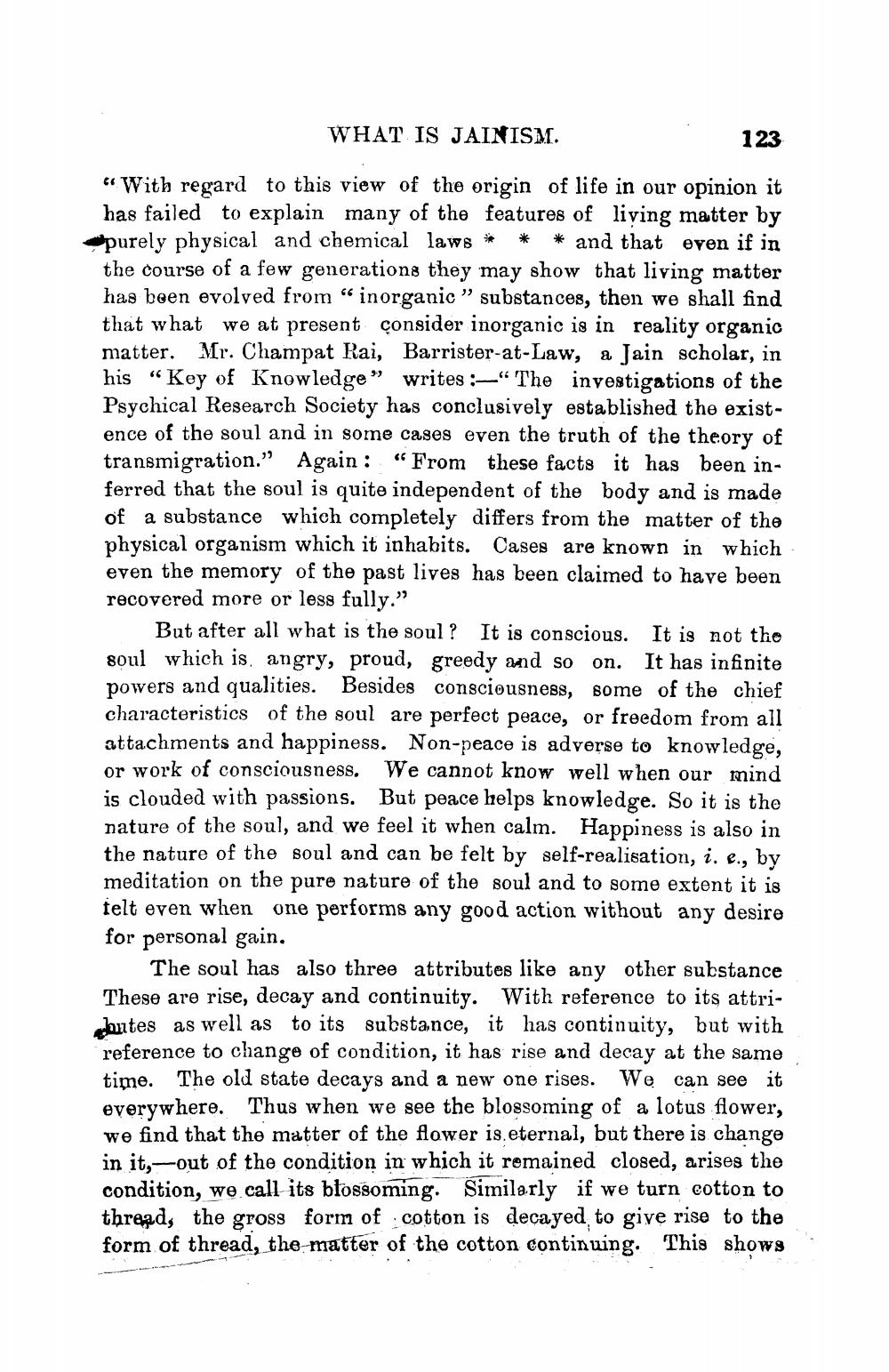________________
WHAT IS JAINISM.
123
“With regard to this view of the origin of life in our opinion it has failed to explain many of the features of living matter by purely physical and chemical laws * * * and that even if in the course of a few generations they may show that living matter has been evolved from “ inorganic” substances, then we shall find that what we at present consider inorganic is in reality organic matter. Mr. Champat Rai, Barrister-at-Law, a Jain scholar, in his “Key of Knowledge” writes :-" The investigations of the Psychical Research Society has conclusively established the existence of the soul and in some cases even the truth of the theory of transmigration.” Again : “From these facts it has been inferred that the soul is quite independent of the body and is made of a substance which completely differs from the matter of the physical organism which it inhabits. Cases are known in which even the memory of the past lives has been claimed to have been recovered more or less fully."
But after all what is the soul? It is conscious. It is not the soul which is, angry, proud, greedy and so on. It has infinite powers and qualities. Besides consciousness, some of the chief characteristics of the soul are perfect peace, or freedom from all attachments and happiness. Non-peace is adverse to knowledge, or work of consciousness. We cannot know well when our mind is clouded with passions. But peace helps knowledge. So it is the nature of the soul, and we feel it when calm. Happiness is also in the nature of the soul and can be felt by self-realisation, i. e., by meditation on the pure nature of the soul and to some extent it is telt even when one performs any good action without any desire for personal gain.
The soul has also three attributes like any other substance These are rise, decay and continuity. With reference to its attriantes as well as to its substance, it has continuity, but with reference to change of condition, it has rise and decay at the same time. The old state decays and a new one rises. We can see it everywhere. Thus when we see the blossoming of a lotus flower, we find that the matter of the flower is.eternal, but there is change in it,-out of the condition in which it remained closed, arises the condition, we call its blossoming. Similarly if we turn cotton to thread, the gross form of cotton is decayed to give rise to the form of thread, the matter of the cotton continuing. This shows




